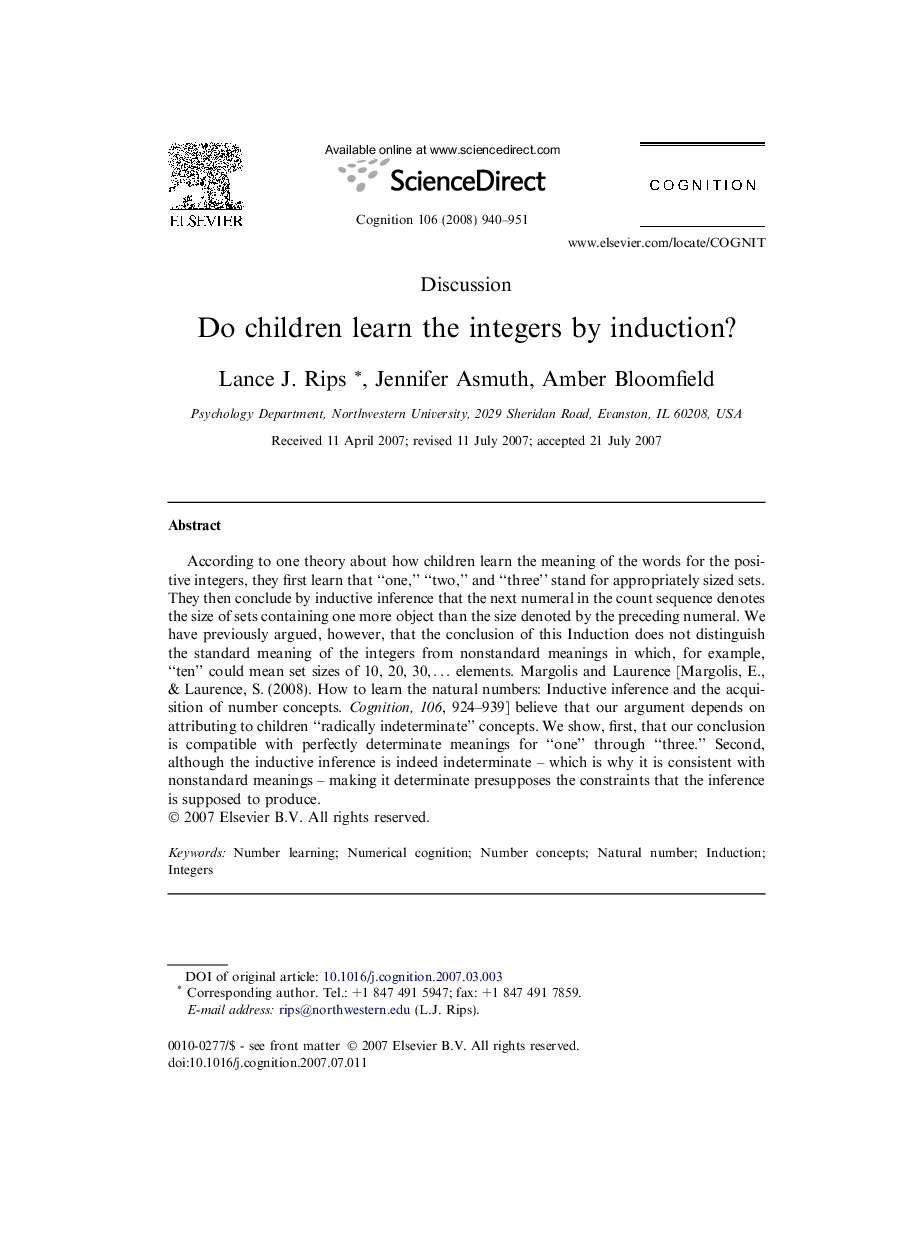| Article ID | Journal | Published Year | Pages | File Type |
|---|---|---|---|---|
| 927191 | Cognition | 2008 | 12 Pages |
According to one theory about how children learn the meaning of the words for the positive integers, they first learn that “one,” “two,” and “three” stand for appropriately sized sets. They then conclude by inductive inference that the next numeral in the count sequence denotes the size of sets containing one more object than the size denoted by the preceding numeral. We have previously argued, however, that the conclusion of this Induction does not distinguish the standard meaning of the integers from nonstandard meanings in which, for example, “ten” could mean set sizes of 10, 20, 30, … elements. Margolis and Laurence [Margolis, E., & Laurence, S. (2008). How to learn the natural numbers: Inductive inference and the acquisition of number concepts. Cognition, 106, 924–939] believe that our argument depends on attributing to children “radically indeterminate” concepts. We show, first, that our conclusion is compatible with perfectly determinate meanings for “one” through “three.” Second, although the inductive inference is indeed indeterminate – which is why it is consistent with nonstandard meanings – making it determinate presupposes the constraints that the inference is supposed to produce.
